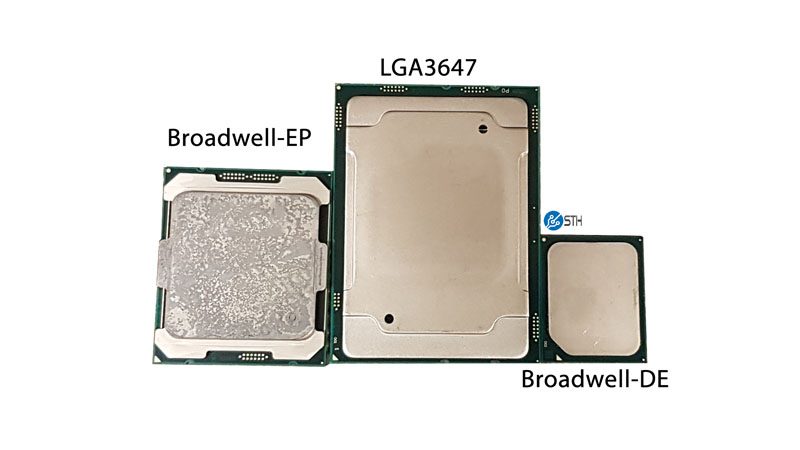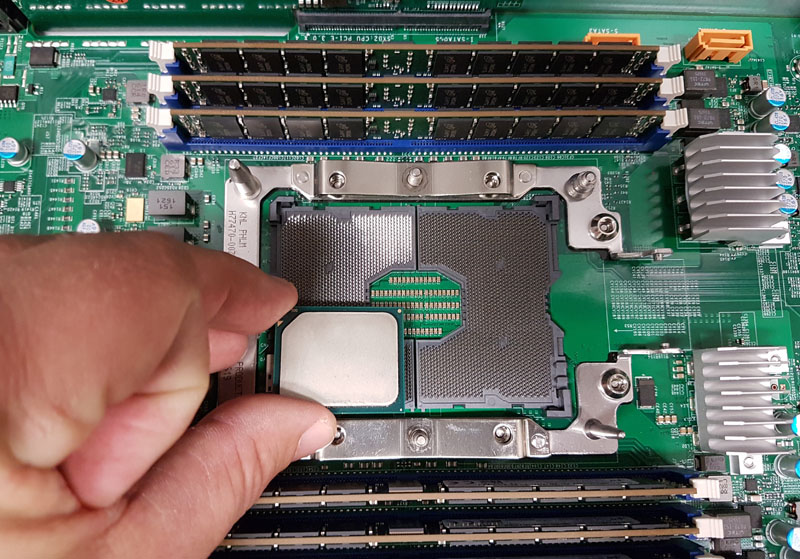Intel is finally giving its embedded Xeon D platform a mid-life cycle refresh. The new Intel Xeon D-1500 networking series adds many features to the original chips we felt were missing. There are two major upgrades to the platform. First, the Intel Xeon D is getting 4x 10GbE. Second, the Intel Xeon D networking series is getting QuickAssist.

Overall, these are not surprising upgrades as Intel needed to update the Xeon D platform in light of the Intel Atom C3000 series (which it also added new official detail around.)
As you can see, we are likely to see production systems in mid-to-late 2017 based on the availability noted below. The Intel Xeon D series was released two years ago in Q1 2015 (although Intel’s copy says Q4 2015)
Here is the information Intel sent on this, lightly edited for readability:
The network series for the Intel Xeon processor D-1500 product family offers new options for infrastructure optimization by bringing the performance and advanced intelligence of Intel Xeon processors into a dense, lower-power system-on-chip. Launched in Q4’15, the Intel Xeon processor D family is Intel’s third-generation 64-bit system-on-chip and the first SoC based on Intel Xeon processor technology. The new network series products within the Intel Xeon processor D-1500 product family expand on the existing product family. It can be deployed for a variety of workloads including midrange network routing, wireless base stations, warm storage, industrial Internet of Things (IoT), and more.
The new network series integrates Intel QuickAssist technology and offers two additional ports of 10 gigabit Ethernet connectivity. The integrated Intel QuickAssist technology delivers up to 40 Gbps encryption/compression throughput. The network series can also deliver up to 90 Mpps of Layer 3 forwarding.Key Intel Xeon D Networking Features
Built-in hardware virtualization to enable dynamic provisioning of services as communication service providers extend network functions virtualization (NFV) to the network edge.
- Intel x86 64-bit software support for scalable performance and broad application compatibility.
- Enhanced reliability, availability, and serviceability (RAS) features, including support for error-correcting code (ECC) memory and platform-level error management and resilience.
- Intel platform storage extensions to enable smarter and more cost-effective storage solutions through integrated technologies that accelerate data movement, protect data and simplify data management.
- Fast encryption and decryption through Intel® Advanced Encryption Standard New Instructions (Intel AES-NI) to accelerate data encryption and decryption for security-enabled websites.
- DPDK (Data Plane Development Kit) helps to develop efficient applications for networking workloads.
- SPDK (Storage Performance Development Kit) to develop efficient applications for storage workloads.
Key Feature Additions to New Network Series
- 4 x 10 GbE integrated Intel Ethernet with double the amount of 10 GbE ports versus the current product family (four ports versus two ports previously).
- Integrated Intel QuickAssist technology with up to 40 Gbps of compression/encryption throughput.
- Reduced design footprint with integrated Intel QuickAssist technology versus using a discrete Intel QuickAssist technology chipset on current Intel Xeon processor D-1500 product designs. Integration of Intel QuickAssist technology delivers high-performance while at the same time eliminating discrete components to lower power consumption and reduce physical space.
Intel Xeon D Networking Family Availability
The Intel Xeon processor D-1500 product family, network series is currently sampling in the first half of 2017 and will move into production by mid-2017. More details on product features will be provided when the products are available in production.
(Source: Intel)





Very nice, wonder if C3000 has quickassist, and how many Gbps encryption it can push compared to Xeon D
Are these copper 10gb ports?
Like the prior Xeon-D parts, I believe that the integrated 10G is just down to the MAC. The PHY itself is still a discrete component, so it’s up to the OEMs to decide what PHY to pair with them (10GBASE-T, SFP+, etc.)
I wonder if they ever come up with a 1600 series based on Skylake / Kaby Lake or this was just an aberration to screw with all the ARM chip makers. I’d like to see them bump up the networking to 25 or 40GbE, maybe even with flexible configurations, say 1×100, 4×25 or whatever. Maybe if Cavium comes up with something cool.